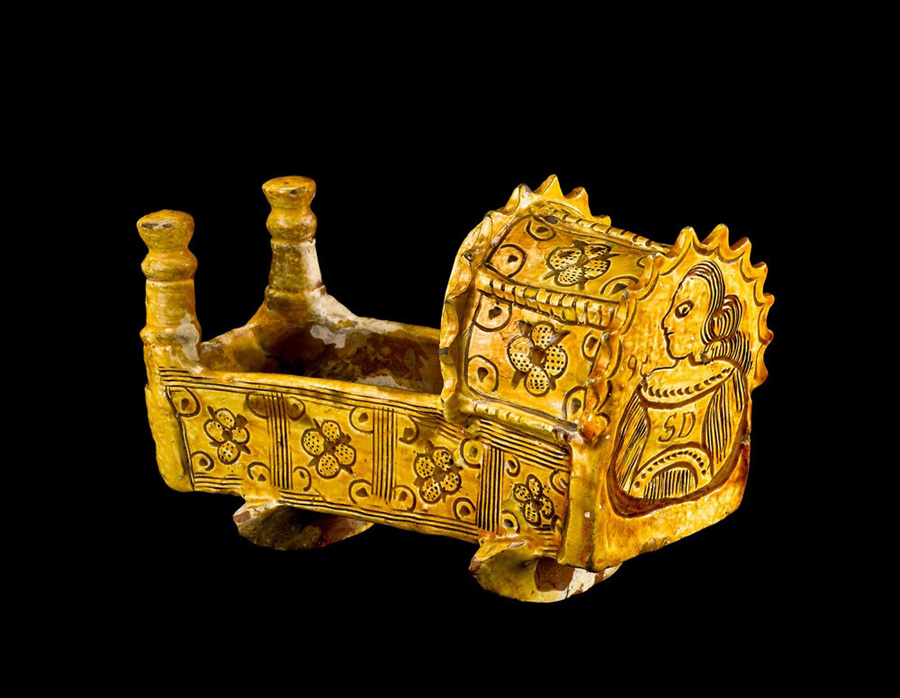Rob Hunter edits Chipstone Foundation’s annual journal Ceramics in America, a forum for new research on the history of ceramics in the American context. Originally an archaeologist, he studied anthropology at the College of William and Mary, where he was the founding director of the college’s Center For Archeological Research. A former curator of ceramics and glass at Colonial Williamsburg turned antiques dealer, he advises collectors and institutions. His clients have included the Colonial Williamsburg Foundation, the British Museum, the Smithsonian Institution and the Museum of Early Southern Decorative Arts. Hunter served as guest curator for the installation of the new William C. and Susan S. Mariner Southern Ceramics Gallery at the Museum of Early Southern Decorative Arts, which opened in 2015. With Luke Beckerdite and Johanna Metzgar Brown, he organized the traveling exhibition “Art in Clay: Masterworks of North Carolina Earthenware.”
How do you view collecting early ceramics today?
Times have changed. Few collectors are methodically assembling broad collections of English or American ceramics. Archeological work at Jamestown, Va., has unearthed incredible Seventeenth Century ceramics that were made in Portugal, Italy, Spain, Germany and the Netherlands, yet there is little interest by museums or individuals in collecting and interpreting these parallels of early American objects. The perception remains that English ceramics are the go-to objects to collect. Prices for early English ceramics remain strong for the very best material, but not so much for the midrange stuff. My advice is to patronize knowledgeable dealers. Too many collectors are reluctant to do so, thinking that they’ll overpay. That’s not true. In many cases, high-end dealers offer the best of the best, pieces that will see the most appreciation.
How are you using social media to encourage ceramics collecting?
Sites like Facebook make it possible to reach thousands of collectors and potential collectors. I usually post multiple times a day to Facebook — an assortment of great early ceramic pieces, some of my own photographs, places I see on my travels and other things I think are interesting. For me, it’s also a great way to meet others who share my interests. My posts are primarily visual. I don’t usually include much text. If someone wants more information, they contact me directly. As far as ceramics go, I’m very selective. I want people to see things they might not otherwise see. I make an effort to publish the latest research findings about early Southern pottery, which makes up a large part of my antiques business, as well.
And your work?
Editing Ceramics in America is pretty much a full-time job, but it gives me the flexibility to travel and work with collectors and museums. I enjoy spreading the word, both to encourage new collectors and to increase the level of connoisseurship generally. I’ve written for publications such as The Magazine Antiques and the Journal of Archeological Science. I speak frequently to museum groups. As far as dealing goes, I maintain a select client list of serious collectors as well as museums. Although I also buy some ceramics for myself, I don’t collect items similar to those I’m selling. The best things are always available for the client, not stashed away on my shelves.

This 2015 photograph by Hunter features objects similar to artifacts recovered from Jamestown, Va., from the 1610 to 1640 period.
What do you do in your spare time?
Photography is my current hobby. It dates to my days as an archeologist. I enjoy taking creative pictures of sunsets and landscapes, and I like photographing New Orleans street scenes and festivals. I recently took a number of photos during Garden Week at Colonial Williamsburg and have them on my Facebook pages. I also create still life shots using antique ceramics. I occasionally use my morning visits to the local Starbucks for photographing some incredibly valuable ceramics, much to the amusement of their staff and other customers. As I said, I’m a collector. One thing I like are vintage remote controls for televisions. They’re not expensive — yet — and I think the origins of the remote control are a fascinating development in human history. I also maintain an academic interest in the history and development of late Eighteenth and early Nineteenth Century English creamwares and pearlwares, of which I have a large collection.
—Rick Russack






